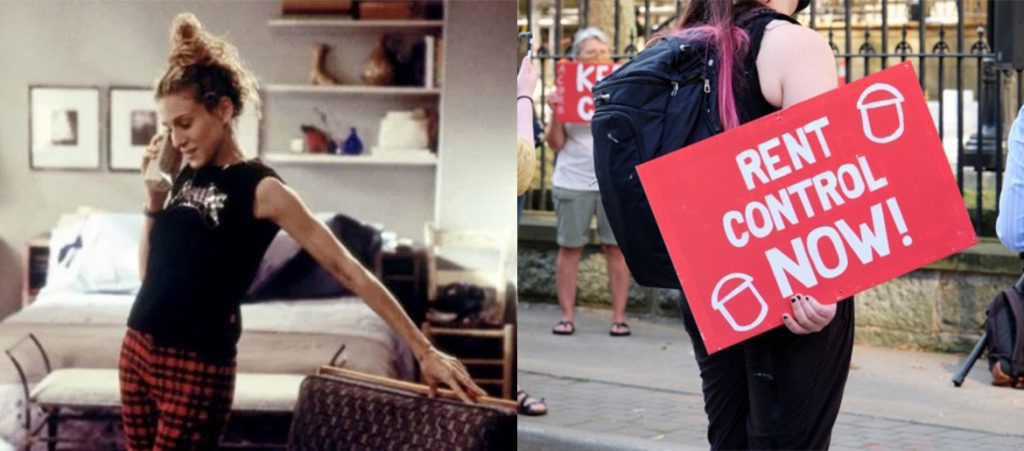
Finding affordable rental housing in Australia has become a daunting challenge, leaving countless individuals and families caught in the grip of a housing crisis. As the struggle continues, rental cap legislation has been proposed as one solution. Sounds great, right? Yes… and no. While a rental cap will stop some of the short-term pain, it’s not the long-term fix we really need.
How rental caps would work
It’s pretty straightforward – rental cap legislation stabilises rental prices by putting a limit on how much a landlord can increase the price. It’s probably better framed as a rental increase cap, as it doesn’t actually lock the price of rent (like the rent-control model used in New York and other global cities).
In Australia, the model most commonly discussed is setting the limit based on inflation (exactly what the Greens are proposing). This would protect tenants from sudden, unaffordable rent hikes, while still allowing landlords to keep up with increases to mortgage repayments or other costs.
Renting rules are set at the state and territory level, and so far only the ACT has a kind of rent cap in place. Landlords cannot increase rent by more than 10% of the rent indicator in the consumer price index. If they want to increase by more than 10%, they have to get the tenant’s approval first or have it approved by tribunal.
Controlling inflation is the Reserve Bank of Australia’s job, but they only really have one tool to do this: cash rates. Raising the cash rate (which raises interest rates) makes it more expensive to get a loan, reducing how much money people have available to spend and therefore forcing companies to lower their prices. Unfortunately it’s a very blunt instrument – as we’re now seeing, landlords are passing the increase in their mortgage repayments right onto renters. This ironically simply drives more inflation. Frustrating! Rental caps are one way to stop this from happening… or at least from happening to excess.
Problems with rental caps
It sounds like a no-brainer, but there are three key limitations of rental caps – and are the reasons they are not being seriously considered by any state government. The first is, predictably, the impact this would have on landlords. Rental caps effectively limit the returns you can make on a property investment, and may reduce the incentive for landlords to maintain their properties adequately. This could result in a decline in the quantity and quality of rental housing available overall.
In 2020, Berlin implemented an ambitious rent cap policy – all flats were frozen at their June 2019 price for five years, and any rents already above that level had to be progressively reduced. The law was overturned in 2021 because although rent was successfully reduced by 7.8%, the number of flats available to rent had reduced by 30%. The number of applicants to each unit had almost doubled, exacerbating the overall housing shorting. Far from an ideal situation.
The second problem with rental caps in Australia is the regulation. We’d need to robust systems to monitor, report and enforce the legislation to stop landlords and property managers trying to get around the laws. Given how flawed our existing tribunal system is… it probably can’t handle the influx that a whole new category of complaints would bring.
Short-term relief vs long-term solution
But for us, the main disadvantage of rental caps is that they don’t address the underlying issue of Australia’s crisis – treating housing as an investment, rather than a basic human right.
Rental caps could have value as a short-term solution, limited to a specific timeframe to give renters immediate relief. But beyond that, long-term solutions will need to increase the supply of affordable housing. At the end of the day, that is the basic equation: increase supply to reduce demand, which reduces the competition that drives up price.
Undoing the current mess will take more than one strategy. Some of them will be expected, like directly funding affordable housing projects and incentivising the construction of medium-density housing. Stricter regulation and taxation on property investments are a must. But there are also creative solutions that Australia should consider, like social housing or encouraging empty nesters to downsize.
Correcting the balance of power between tenants and landlords can also achieve more than simple rent caps. Passing stronger laws against unfair evictions, improving dispute resolution mechanisms, and encouraging long-term tenancy agreements will create a stronge, more stable market and stop at least some of the price escalation we’ve seen in the past 12 months. It sounds like common sense, but a healthy relationship between tenants, landlords and property managers will solve a lot of the problems.
It sounds scary, but the pain and rage of the current rental crisis is an opportunity to push for the housing reform Australia desperately needs. Even in the unlikely case that an emergency rental cap is introduced in your state or territory (we can dream!) – we don’t want legislative change to end there.




Comments are closed.